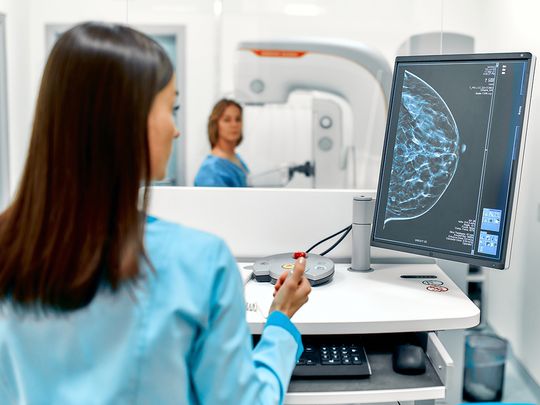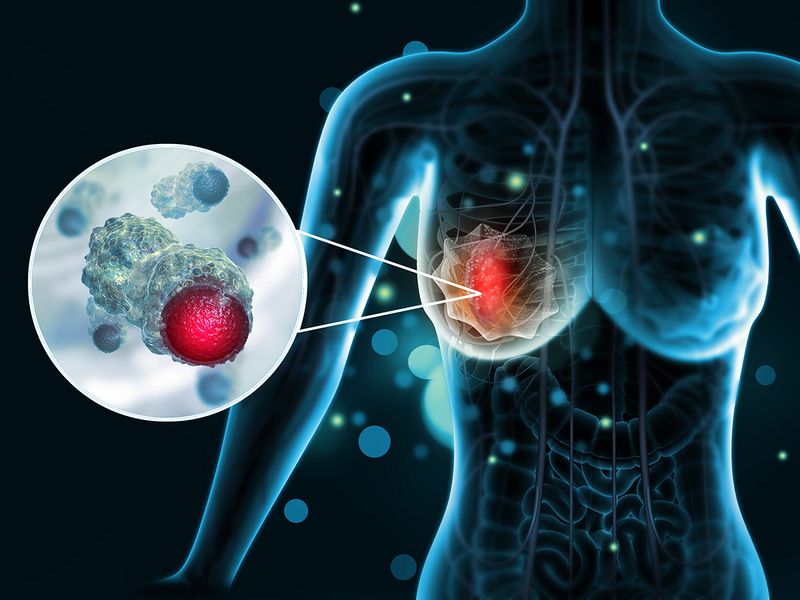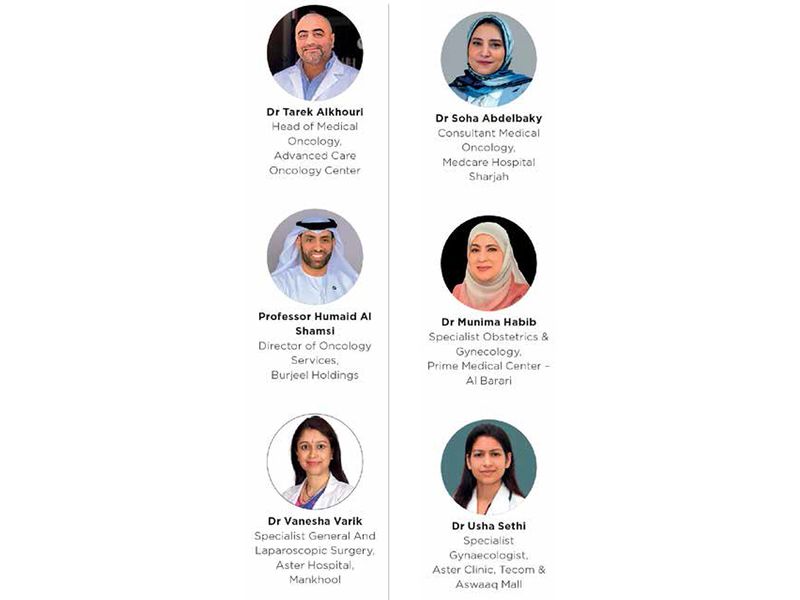Breast cancer: The fear of return

Image Credit: Supplied
Highlight
Despite significant investments in breast cancer research, predicting the recurrence of this disease remains a complex puzzle. Experts reveal the latest findings, lifestyle changes and behaviours that can mitigate risk
Breast cancer has perplexed researchers and healthcare professionals for years with its propensity for recurrence. Despite the vast resources poured into breast cancer studies, predicting when and why the disease might resurface has, for the most part, remained a challenging guessing game. Nevertheless, experts are gradually peeling back the layers of mystery surrounding this relentless condition.
The journey towards understanding breast cancer recurrence begins with the concept of “seed cells.” These elusive cells are akin to dormant time bombs that can lie in wait for years within the body, only to trigger a new and often more aggressive outbreak of the disease. Dr Tarek Alkhouri, Head of Medical Oncology at the Advanced Care Oncology Center, expounds on this phenomenon, stating, “Undetected cancer cells may persist in the body following initial treatment, remaining dormant for a period before becoming active, leading to recurrence. This underlines the need for comprehensive treatment and vigilant monitoring to detect any dormant cells early.”
Furthermore, Professor Humaid Al Shamsi, Director of Oncology Services at Burjeel Holdings, notes another key factor in recurrence — the persistence of residual cancer cells. Sometimes, not all cancer cells are eradicated during the initial treatment, and these remaining cells can survive and eventually grow into a recurrent tumour. Prof Al Shamsi adds, “Breast cancer cells can acquire genetic mutations over time, making them resistant to previously effective treatments. These mutations can lead to the growth of new, more aggressive tumours that can be challenging to treat.”
In the quest to comprehend breast cancer recurrence, Dr Vanesha Varik, Specialist General And Laparoscopic Surgery, Aster Hospital, Mankhool, stresses the importance of adhering to complete and guideline-based treatment. When patients opt for only partial treatment, face financial constraints, or experience gaps in their treatment, the risk of recurrence escalates. “Some breast cancer subtypes may inherently be more aggressive and prone to recurrence,” Dr Varik explains. “Genetic and molecular factors can also influence the risk.”
Dormant cancer cells, remaining undetected for years or even decades before reawakening, are another piece of this intricate puzzle. Dr Soha Abdelbaky, Consultant Medical Oncology at Medcare Hospital Sharjah, emphasises their significance. She also points out that some cancer cells may develop resistance to initial treatments, often due to genetic mutations. Moreover, certain characteristics of the original breast cancer, such as a
larger tumour size, initial lymph node involvement, HER2-positive disease, and estrogen-negative breast cancer, can increase the risk of recurrence.
Dr Munima Habib, Specialist Obstetrics & Gynaecology at Prime Medical Center – Al Barari, provides further insight into the mechanisms of breast cancer recurrence. She explains that recurrence can occur when cells that were originally part of the primary tumour break away and hide nearby in the breast or another part of the body. “These cells can remain dormant for a while and then begin growing again, leading to a recurrence,” she adds.

Image Credit: Shutterstock
What to watch out for
When it comes to breast cancer, knowledge is power. Understanding the symptoms of recurrent breast cancer is critical for early detection and timely intervention. Dr Tarek Alkhouri highlights the importance of regular follow-up appointments and self-exams. He states, “The symptoms of recurrent breast cancer can vary, including a lump in the breast or underarm, changes in breast size or shape, nipple discharge, alterations in the skin, persistent pain, or unexplained weight loss.”
One of the most prominent symptoms to be aware of is the emergence of a new lump. This lump can manifest in various locations, including the remaining breast, the chest (in cases of prior mastectomy), or even in the opposite breast or armpit. Another significant symptom to watch for is changes in the skin. These alterations might take the form of redness, dimpling, or puckering, serving as an important indicator of potential recurrence.
Prof Al Shamsi adds, “Nipple changes are also noteworthy symptoms. This may include the presence of bloody discharge or the recent retraction of the nipple, occurring on either side. In cases where breast cancer has recurred in the bones, individuals may experience localised bone pain, which can be a significant sign to be vigilant about.”
The presence of severe headache, dizziness, loss of balance, or stroke-like symptoms can suggest a recurrence, potentially in the brain. Neurological symptoms should be monitored closely. “Liver involvement is another significant aspect to consider,” says Prof Shamsi. “Jaundice, characterised by a deep yellowing of the eyes or urine, or sudden abdominal distension could be an indication of the spread of cancer to the liver.”
Dr Varik concurs with the assessment of symptoms provided by Prof Al Shamsi. She points out that vigilance is essential when it comes to recurrent breast cancer. Any of these symptoms should prompt a visit to a healthcare professional for thorough evaluation.
To facilitate early detection and understanding of the condition, Dr Abdelbaky agrees that one of the hallmark signs of recurrent breast cancer is the presence of a new lump or thickening in the breast. This can serve as an early indicator that further evaluation is warranted. Changes in the size, shape, or appearance of the breast can also signify a potential recurrence. These changes may be subtle but are crucial to recognise.
“Shortness of breath is a symptom that requires attention,” says Dr Abdelbaky. “It can be indicative of various underlying issues, including lung metastasis, which is important to detect early. The experience of fatigue is another common symptom that patients may encounter. So also, unexplained weight loss is often seen in cases of recurrent breast cancer and should not be ignored.”
Dr Habib provides insight into different types of recurrence. Local recurrence may manifest as a new lump or irregular area of firmness in the breast, or a painless nodule under the chest wall (in cases of mastectomy). Changes in the skin, inflammation, or redness, as well as nipple discharge, are also potential indicators.
“For regional recurrence, individuals should watch out for a lump or swelling in the lymph nodes located under the arm, near the collarbone, in the groove above the collarbone, or in the neck,” says Dr Habib. “Distant recurrence signifies that cancer has travelled to other parts of the body, such as the bones, liver, or lungs. Warning signs may include unexpected weight loss, persistent and worsening pain in the chest, back, or hip bone, as well as symptoms like persistent cough, breathlessness, severe headaches, seizures, and extreme fatigue.”

Image Credit: Supplied
The road to lowered risk
Dr Alkhouri throws the spotlight on several strategies to lower the risk of breast cancer recurrence. He advises, “Taking your medications as prescribed by your doctor, following a healthy diet, exercising regularly, maintaining a healthy weight, and avoiding smoking and excessive alcohol consumption are key steps.”
When asked about the role of diet and exercise, Dr Alkhouri notes, “A healthy diet and regular exercise can help improve overall health and well-being and may also reduce the risk of breast cancer recurrence. Studies suggest that women who consume diets rich in fruits, vegetables, and whole grains and maintain a regular exercise routine have a lower risk of recurrence.”
Dr Usha Sethi, Specialist Gynaecologist, Aster Clinic, Tecom & Aswaaq Mall, delves into the potential of a combined approach. She explains, “Combined intervention of diet and exercise appears promising in reducing the risk of breast cancer recurrence. Recent research shows that maintaining a healthy body weight can help prevent breast cancer and improve survival after diagnosis.”
Dr Sethi adds, “Eating a diet rich in fibre from wholegrains, pulses, vegetables, and fruits while minimising saturated fats has been shown to improve survival. Physical activity not only reduces breast cancer recurrence but also enhances the overall quality of life.”
Dr Abdelbaky highlights that there are various measures to lower the risk of breast cancer recurrence, such as taking prescribed medications, maintaining a healthy diet, exercising regularly, and keeping a healthy weight. She echoes the significance of a balanced lifestyle.
In terms of diet and exercise, Dr Abdelbaky reiterates, “A healthy diet and regular exercise contribute to overall well-being and can reduce the risk of breast cancer recurrence. Studies suggest that women who incorporate a diet rich in fruits, vegetables, and wholegrains while maintaining a regular exercise regimen are at a decreased risk of recurrence.”
Dr Habib underscores the importance of a holistic approach in reducing the risk of breast cancer recurrence. She says, “Maintaining a healthy weight, being physically active, and following a nutritious diet can lower the risk of recurrence and safeguard against other health issues.”
Dr Habib adds, “While there are no definitive diets to prevent cancer recurrence, certain dietary patterns may reduce the risk. A diet rich in fibre, low in saturated fats, adequate intake of fruits and vegetables, and vitamin D supplements have been recommended. Moreover, avoiding alcohol and smoking is crucial in risk reduction. Adherence to scheduled screening tests and follow-up plans advised by your doctor is vital.”
Prof Al Shamsi, draws attention to various measures that lower the risk of breast cancer recurrence. He points out that adherence to follow-up scans and medical appointments, early reporting of abnormal symptoms, and compliance with advanced treatments like hormone therapy, targeted therapy, or immunotherapy are essential.
Coping with the fear
Dealing with the fear of cancer recurrence is a common concern among cancer survivors. It’s natural to worry about the possibility of the disease returning, but it’s crucial not to let these worries overshadow your life.
Prof Shamshi says it is important to understand that worrying about cancer recurrence won’t change the situation. Instead, he recommends a proactive approach. This includes maintaining a very close follow-up with your medical team and adopting a healthy lifestyle. Regular follow-up appointments, sticking to prescribed medications, and adhering to a healthy routine can significantly reduce the risk of recurrence. “However, if these concerns start affecting your daily life, seeking help from a psychiatrist or psychologist is advisable,” he says.
While it’s impossible to eliminate these worries entirely, Dr Habib recommends taking steps to ease your distress. Developing a comprehensive care plan, which includes adhering to medication, recommended tests, procedures, and follow-up appointments, is essential. The practice of mind-body techniques like meditation can also help alleviate anxiety. “Connecting with others who have experienced a similar journey through online forums or support groups can provide you with strength and understanding,” says Dr Habib.
While underlining the universality of the fear of recurrence and the importance of addressing distress and anxiety, Dr Sethi recommends seeking support from family, friends, and healthcare providers. Engaging in stress-reducing activities, pursuing hobbies, and maintaining an active lifestyle can help manage these fears. She also highlights the value of support groups, which offer strength and understanding through shared experiences.
Dr Abdelbaky acknowledges that it’s entirely normal to worry about cancer recurrence after treatment. To help cope with these concerns, she suggests several strategies. First, open a dialogue with your doctor about your specific fears and worries. They can help you understand your individual risk of recurrence and work with you to develop a comprehensive plan to manage these concerns. “Remember, you are not alone in this journey, and there is a network of individuals who care about your well-being and are willing to support you through these challenging times,” she says.


